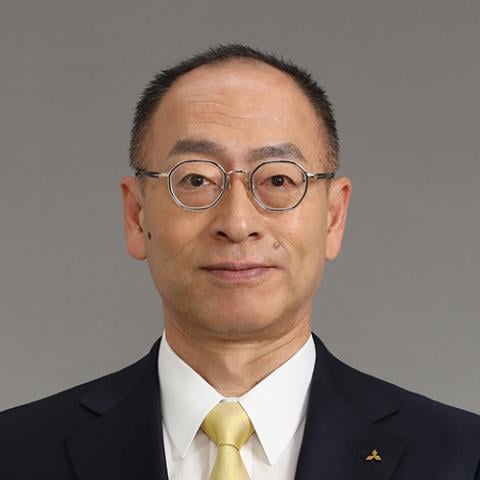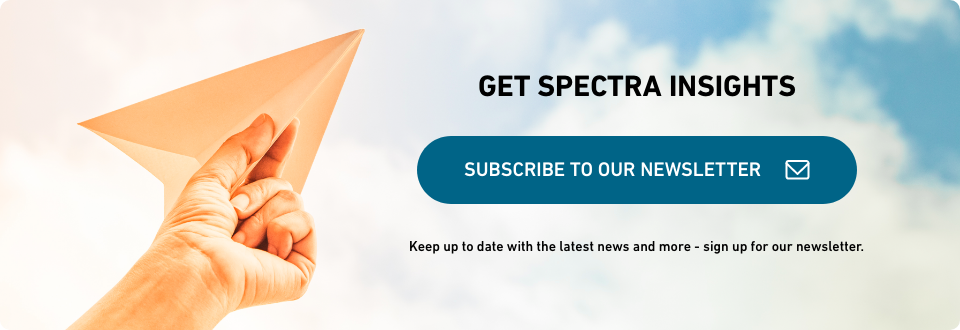Accelerating MHI’s growth through innovation and optimization
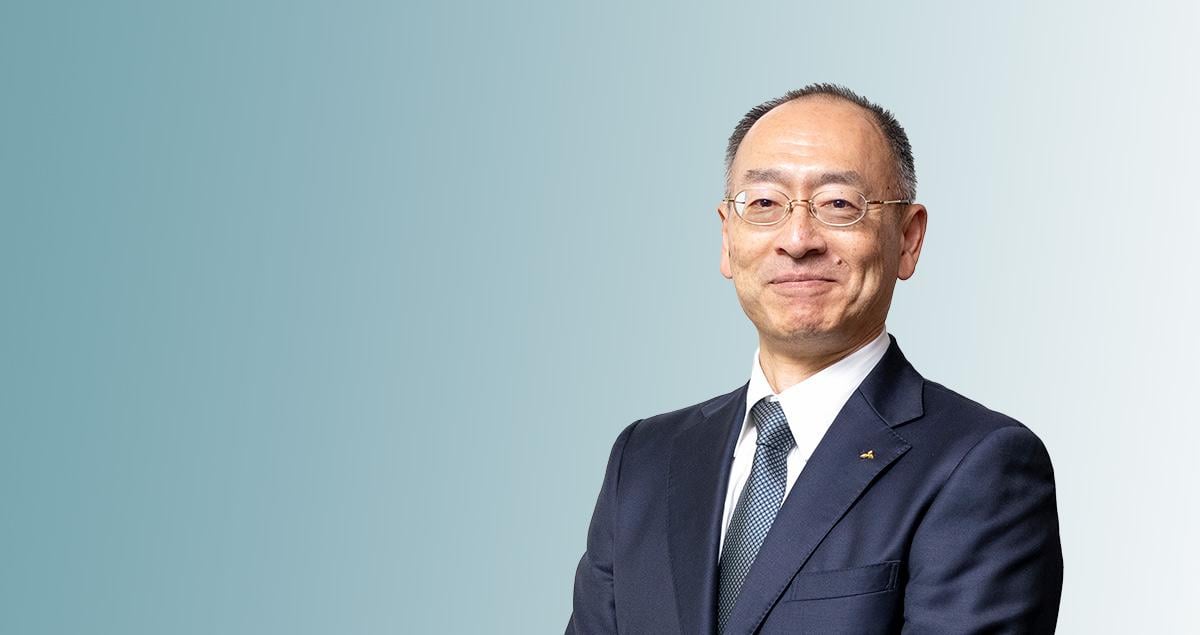
This article was previously published in our newsletter, if you're not already a subscriber, sign up here.
I am fortunate to have taken over as CEO of Mitsubishi Heavy Industries at a time when the group is performing strongly: revenue, business profit and cash flow hit record levels in 2024, and our order book stands at over ¥10 trillion ($70 billion).
However, it is precisely during good times such as these, when we have the resources and the time, that we must set a long-term strategy and make the fundamental changes to our way of working and our way of thinking that will determine MHI’s future success.
This is why I am introducing a new concept – Innovative Total Optimization – that I believe can transform the group’s prospects by tapping into the potential that already exists inside MHI today. You may notice that ITO mirrors my own name in English. This was mostly the idea of some of my colleagues, who suggested an acronym that would be easy to remember. But it also signifies my sincere, personal commitment to changing the mindset of every single person at MHI.
From productivity to profitability
The first component of ITO is broadly internal. Thinking vertically, we will optimize the value chains within each of our business units; looking at it horizontally, we aim to improve the connections between businesses. The result will be higher productivity and hence improved profitability.
Let me give you a simple example. Many of our marquee products, like turbines, rockets, fighter jets and nuclear reactors are very complex to fabricate and spend long periods – months or even years – moving slowly through a factory being bent, pressed or welded into shape. Sometimes they all need to pass through a single machine tool, which results in delays. Buying a second such machine to remove that bottleneck can dramatically increase productivity and generate a very high return on investment.
And we are going beyond manufacturing to look at all our processes, from planning and designing to procurement and marketing, to see how we can save time and money. We will implement artificial intelligence and digitization to help us optimize, with the aim of halving lead times across the group – resulting in a significant improvement in margins.
Of course, this is easier to say than to do and most companies, including MHI over the last 60 years, have made such promises. The reason I am confident that we can deliver this time, and that ITO is not just a concept but also actually a practical methodology, is that we have already proved it can work.
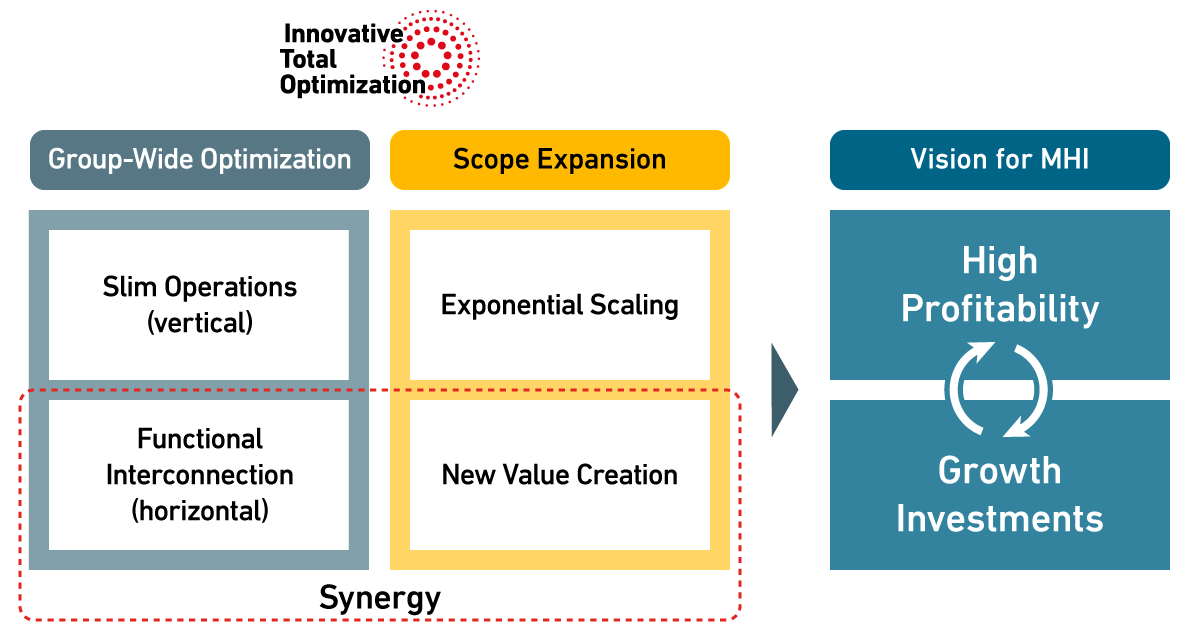
A common platform drives innovation
In my previous role as Chief Technology Officer, I centralized the group’s entire Research & Development efforts and created a multitude of small, agile teams that were given seed funding to explore new ideas, to fail fast, regroup and try again. The result was an explosion in the productivity of our R&D.
My work as CTO taught me another lesson. In a world where many of our peers are splitting into more focused businesses, there is value in remaining a conglomerate. It is a bold claim, but I believe that right now there is no other company in the world that combines MHI’s diversity – encompassing 700 base technologies, 500 product categories and thousands of actual products across 30 business sectors -- with a common operating platform in quite the way we do.
This combination can be a tremendous source not just of productivity but also of innovation. Again, I can vouch for this from personal experience. Early in my career, I worked on a new gas turbine model at our Takasago factory in western Japan: not only did my team and I combine research with design and development; we also sometimes worked on rocket engines, turbochargers and military jet engines since these all shared the same basic technology.
If MHI’s businesses in the future can work together even more closely with suppliers, customers and each other – so both vertically and horizontally – the dividends in terms of higher productivity and original products and services will be remarkable. A year ago, I created 130 multi-disciplinary task forces across the group to do just that -- and the early results are encouraging.
An order of magnitude more
While MHI is changing, the world around us is changing just as rapidly. In order for our group to make a meaningful contribution to solving the societal challenges of our time -- from the Energy Transition to ensuring national security to helping people live comfortable urban lives -- we need to expand our scope.
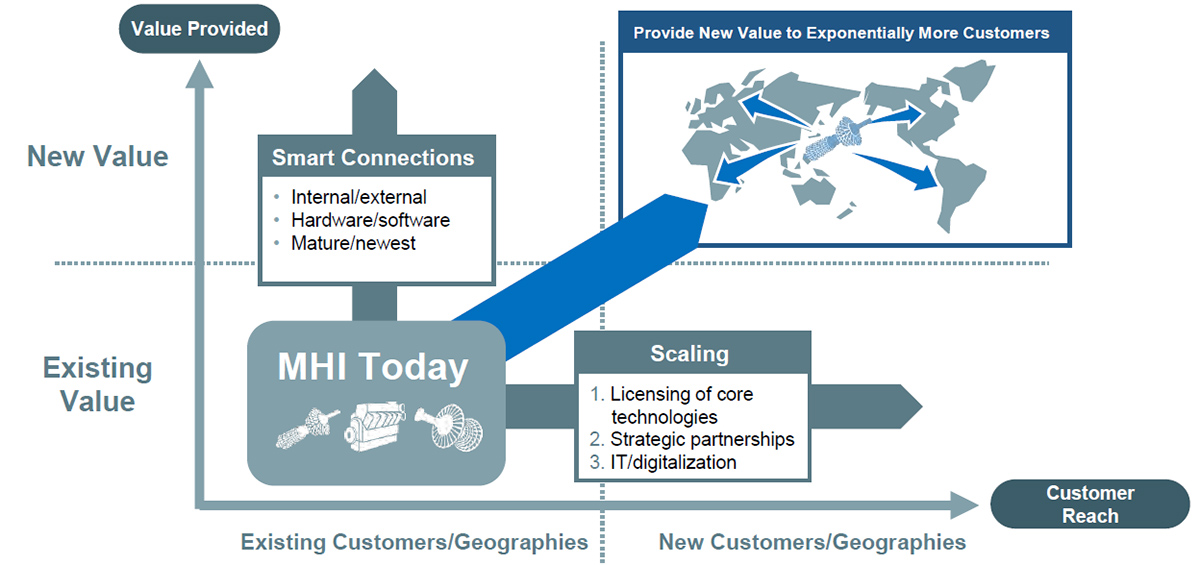
In other words – and here we come to the second component of ITO -- we need to exponentially scale our existing businesses and to create new value by anticipating customer needs. In this way we will be able to reach an order of magnitude more customers.
Let me illustrate this with another basic example. While we are market leaders in our key businesses, there are also some products that have just a 5% or 10% share of a market that has become largely immobile over the past decade, with few new products or structural change. If we can innovate and disrupt a market like that, we can potentially go from a 5% share all the way to 100% - a 20-fold improvement.
Scaling up like this will require a fresh approach to how we market and sell and that means opening ourselves up to more partnerships and to licensing out more of our technologies. Once again, my idea is simple. In the 1960s to 1980s, MHI licensed in technologies in areas such as gas turbines, nuclear and defense. We subsequently developed these in-house into what are today our core technologies. Now we are ready to become the licensor.
Most countries, particularly developing ones, need more critical infrastructure, from power stations to waste-to-energy facilities, from steel plants to public transport systems. We have tried and tested products in all of these areas and are ready to share our technology. Ideally, we are looking for a strategic partner for each target country – perhaps a company that looks a lot like MHI did 50 or 60 years ago.
Shifting our mindset
The shift from licensing in to licensing out should solve another issue I have observed. Our historical ‘lessee’ mindset means we tend to tailor our products in order to please the customer. That is laudable, but the time and effort it takes means we do not have the resources to scale in the way we need to.
In the future, as lessors, our task will be to standardize and mass produce our products – and let our licensees tailor them to suit the end customer. In that way, we will be able to benefit far more people and move the world forward significantly – as we have committed to doing.
Standardization will also be the key to progress in our future growth areas. When it comes to the Energy Transition, a lot of technologies, including carbon capture and hydrogen & ammonia solutions, have been developed around the world. But current projects are simply not economic, preventing these markets from scaling as much as needed.
Our approach will be to reduce costs through mass production and encourage customers to start small and scale gradually. The range of compact CO₂ capture models we have developed in the past few years is a good illustration of how we will do this.
Creating our future
We have extensive experience in control systems and AI based optimization that can operate critical infrastructure in a coordinated way. As we link different elements, we gain efficiencies and can also promote a circular economy.
Our new Prismo AGT, for instance, can recharge at each station in a matter of seconds with electricity provided by solar panels. Our waste-to-energy equipment, lets us dissolve municipal waste into biomass. Not only does that reduce its volume by 90% and eliminate odors; the methane generated by the biomass can be used to develop sustainable aviation fuel (SAF).
Most new products and use cases seem strange at first: who imagined that your phone would also become your camera and your browser? But anticipating such trends is critical. By implementing ITO, I believe MHI can create a prosperous future for itself and help to solve the critical challenges facing our world.
![]()
Learn more about the Outline of MHI Group




